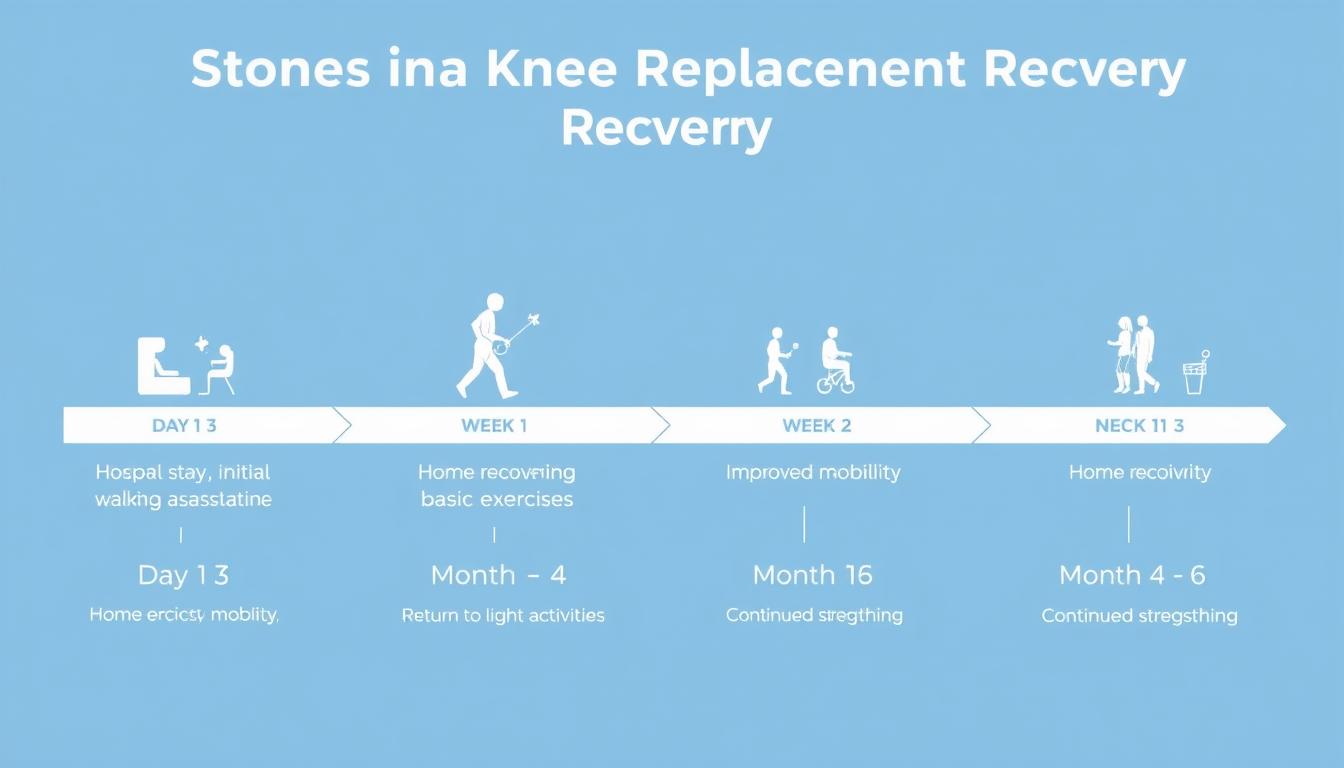

Different knee surgeries require specific recovery approaches. Understanding your procedure is the first step toward effective rehabilitation.efore and after comparison of knee joint replacement surgery
Meniscus tear surgery typically involves arthroscopic techniques, where small incisions allow surgeons to trim or repair the damaged cartilage. This minimally invasive approach usually results in faster recovery times compared to more extensive procedures.
ACL (Anterior Cruciate Ligament) reconstruction involves replacing the torn ligament with a tissue graft. Your surgeon may use different graft options:
Total knee replacement (arthroplasty) becomes necessary when knee damage is severe and other treatments haven’t provided relief. During this procedure, damaged bone and cartilage are removed and replaced with artificial components.
Recovery from knee surgery follows a general timeline, though individual experiences may vary based on surgery type, overall health, and commitment to rehabilitation.
Milestones in Knee Replacement Recovery
The first week focuses on managing pain, protecting your incision, and beginning gentle movement.
Proper elevation and icing technique for post-surgery swelling management
During this phase, you’ll begin more structured physical therapy for knee recovery and gradually increase your activity level.
The focus shifts to rebuilding strength, improving range of motion, and returning to normal activities.
Our specialists can create a customized rehabilitation program based on your specific surgery and health needs.
Consistent physical therapy for knee recovery is crucial for restoring function and strength. These foundational exercises form the core of most rehabilitation programs.
This simple exercise improves circulation and helps prevent blood clots.
Ankle pump exercise to improve circulation after knee surgery
Heel slides help restore knee flexion (bending) gradually and safely.
This isometric exercise activates and strengthens the quadriceps muscles without moving the knee joint.
Proper form for quad set exercise to strengthen thigh muscles
Download our comprehensive knee rehabilitation exercise guide with detailed instructions and progression plans.
Effective post-surgery pain relief strategies are essential for comfortable recovery and successful rehabilitation.
Following your prescribed medication schedule is crucial, especially in the early recovery phase.
Sample medication schedule for managing post-operative pain
Cold therapy (cryotherapy) is highly effective for reducing pain and swelling after knee surgery.
Compression helps control swelling and provides joint stability during recovery.
Different compression options for post-surgical swelling control
Discover our curated pain-relief products specifically selected to support knee surgery recovery.
Avoiding these common pitfalls can help ensure a smoother recovery process and better long-term outcomes.
Common mistakes that can delay knee surgery recovery
Pushing too hard too quickly can damage your surgical site and delay healing.
Consistent rehabilitation is crucial for optimal recovery and long-term function.
Proper nutrition provides the building blocks your body needs for healing.
Nutrient-rich meal supporting tissue repair and reducing inflammation
Returning to athletic activities requires a careful, progressive approach to protect your knee and ensure long-term function.
Functional testing with professional supervision before sports return
Before returning to sports, you should pass functional tests that assess your knee’s readiness for specific movements.
Braces can provide additional support and protection when returning to physical activities.
Types of knee braces for different recovery stages and activities
Implementing strategies to protect your knee can help maintain surgical results for years to come.
Athletes: See our Sports Rehab Protocol for specialized guidance on returning to competitive activities.
Successful knee surgery recovery requires patience, dedication, and proper guidance. By following the rehabilitation protocols outlined by your healthcare team and implementing the strategies in this guide, you can maximize your healing potential and return to the activities you enjoy.
Remember that recovery timelines vary based on individual factors, including age, overall health, and the specific procedure performed. Stay in regular communication with your healthcare providers throughout your recovery journey.
Our knee specialists can help you navigate your recovery with personalized care and expert advice.
Recovery is not just about healing physically, but also about rebuilding confidence in your mobility and returning to the activities that bring you joy.
For additional resources on knee health and recovery, visit the American Academy of Orthopedic Surgeons or learn more about meniscus tear surgery recovery.
As a physical therapist with over 30 years of experience, I've helped countless patients identify…
Rheumatoid arthritis (RA) is a chronic autoimmune disease that follows a progressive course, typically worsening…
Discover how to alleviate Knee pain when vacuuming on carpet with our expert tips and…
Discover the best foam padding for carpet knee pain. We review top products to help…
We're analyzing Carpet vs. hard floor knee pressure to help you decide which flooring is…
Discover how Knee bursitis and carpet surfaces are connected in our Ultimate Guide. Learn the…